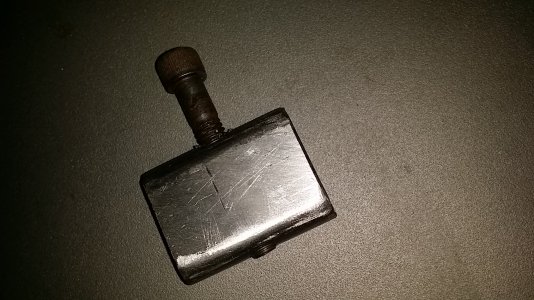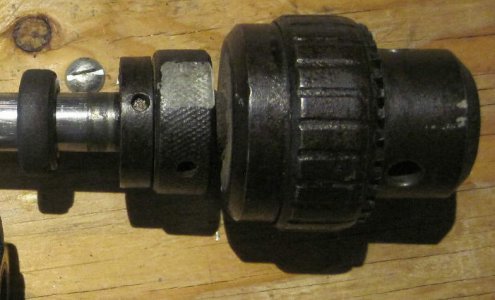The taper on my Power King is JT33. I replaced the original with a keyless chuck from Shars with significantly less runout. I still think it is very questionable for milling.
It's called making a silk purse from a sow's ear but sometimes we are forced to do this by forces beyond our control like a catastrophic fire that destroyed my whole shop and everything in it.
I found a chart that I compared to my spindle and it is indeed a JT33.
This has been another learning experience. I always assumed that the taper was defined by the angle and the length was sort of optional.
Examining the taper and the chuck, it appears that a previous owner solved the holding problem with some sort of epoxy. It was conpicuous on one side of the arbor and hoping this could be the cause of runout I cleaned off and "replaced" the chuck.
Without getting violent all attempts left me with a chuck that falls out just by swearing at it.
However, my first try left me with about half the run out it originally had. This may just be a fluke, but if I can determine that the runout is well defined, I might try grinding one of the jaws with a Dremel before buying a new one. I solved the loose chuck problem once with a drop of super glue and it worked great. I suspect that was not invented at the time the expoxy was used.
I notice that LMS offers two similar chucks but with different runout specs and prices. If all else fails, this is what I will try next.
Thanks,
Jack



